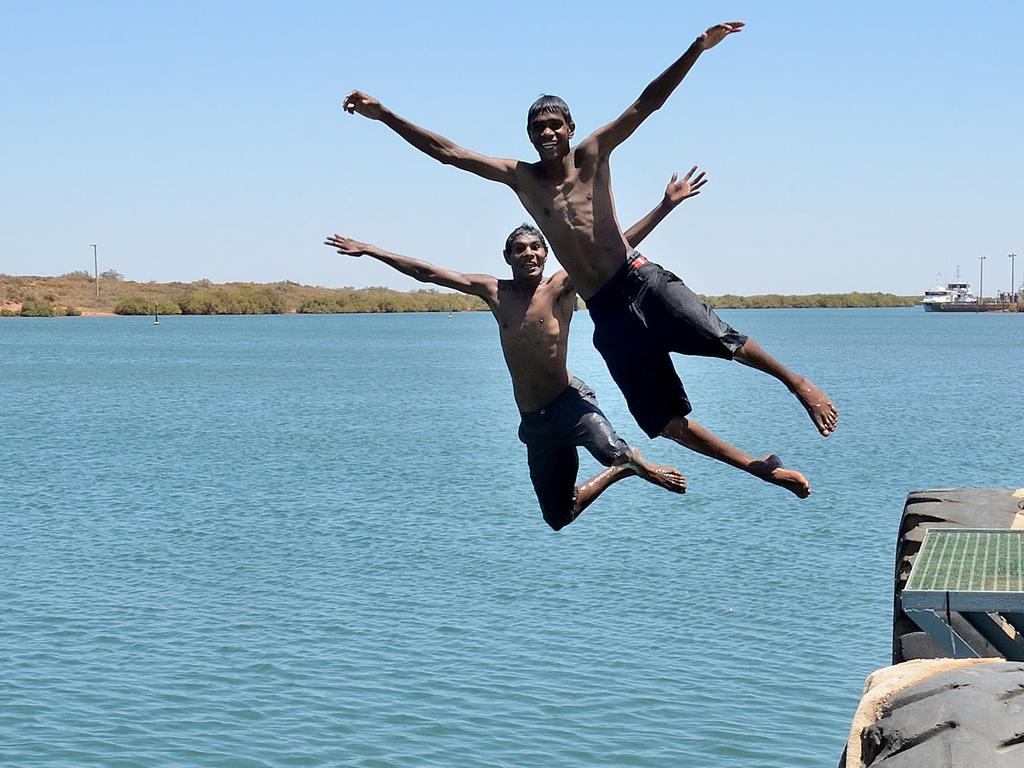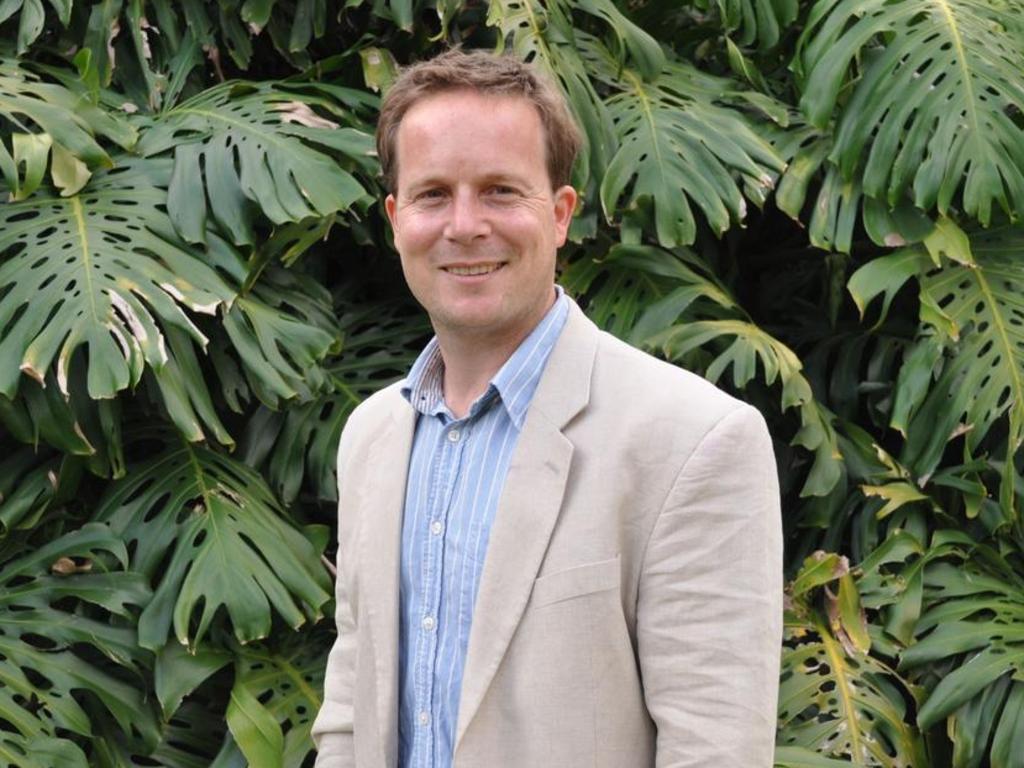Climate in Australia: Why 50 degree days are coming
Climate change is pushing the mercury high in Australian towns and cities and the risks to human health and life are serious.
There is no ice skating in Onslow. This tiny blip of a town on Western Australia’s broad shoulder, population 848, experiences warm winters and scorching summers. The average daily maximum in January is 36.5 degrees. To live in Onslow is to know what heat is.
But even these hardy locals were gobsmacked by the sun’s strength on January 12 this year, when the mercury topped out at a brutal 50.7 degrees.
Birds visibly suffered in the trees. At the airport, hoses were turned on aircon units to cool them down, while Royal Flying Doctor Service planes became hot boxes, unsuitable for patient transport. A scrub fire 12 kms out of town threatened to get out of control, forcing volunteers to suit up and fight it, right in the heat of the afternoon.
“I’ve spent a lot of my career in the northwest, in the Kimberley and Pilbara region, and you’d expect high 30s, or 40s,” said Kenn Donohoe, CEO with the Shire of Ashburton, the enormous local government area that takes in Onslow. “If it got to 43 or 44 degrees, people might be talking about that … but getting up to 50 degrees is really quite unusual. We had started logging staff off because we knew it was going to be a hot day, and we had staff start working at 4 o’clock in the morning to avoid the heat.”

Onslow equalled the official Australian maximum temperature record that day, matching the 50.7 recorded on January 2, 1960, in Oodnadatta, South Australia.
Extremely hot days have been recorded here and there around the globe for more than a century – the world-beater being a scarcely-believable 56.7 in California’s Death Valley in 1913.
But something has shifted. More and more countries are registering 50 degree days, or getting very close to that mark. Last year Canada and Turkey set new temperature records above 49 degrees, and Oman soared to 51.6. Since 2016, China, India, Pakistan, Iran, Iraq, Kuwait and Algeria have all logged official temperatures in the 50s.


And the extremely hot days are not just happening in deserts. They’re occurring in cities, affecting millions of people at a time, as residents of Western Sydney found out the hard way on January 4, 2020, when the Bureau of Meteorology (BoM) recorded tops of 48.9 degrees in Penrith.
Weather experts say heatwaves kill more Australians than any other climatic phenomena, and more extremely hot days are coming our way because of climate change, and we are not doing nearly enough to protect ourselves.
If you think the Emerald City of Oz is not likely to join the ranks of those middle eastern states that hit 50 degrees any time soon, think again: it’s already in that club, according to some researchers.
On the same day the BoM officially recorded 48.9 degrees in Penrith, University of Western Sydney (UWS) scientists say their weather stations in the area registered a staggering 52 degrees.
While not officially recognised by the BoM, the differing results are not incompatible, as microclimates can vary dramatically from suburb to suburb, said Sebastian Pfautsch, Associate Professor of Urban Studies at UWS.
“The BoM weather stations are set up to the specifications provided by the World Meteorological Organisation, so you can compare,” said Assoc Prof Pfautsch. “One of those requirements is that the station must be on grass without any hard obstacles in its vicinity, 15 metres in radius. Now picture that in an urban space: you are already in a mini park, which of course has a very different microclimate compared to an industrial site, where you have very little canopy and zero grass. So that makes it clear the BoM weather stations are very likely most of the time underestimating the actual microclimate you would find in spaces that have a lot of hard infrastructure.”

Western Sydney is more vulnerable to extreme heat than probably anywhere else in Australia, said Assoc Prof Pfautsch. Situated too far inland to get cooling sea breezes, its topography – a gentle slope from Parramatta down towards the Nepean River – also acts as a heat sink, he said. These natural disadvantages have been compounded by overdevelopment and poor planning, with streets that enable hot air to accumulate rather than flow through.
Even before the 48.9 degree shocker, work was underway in Sydney and many other Australian cities to ameliorate the impacts of heatwaves. Trees are being planted to provide additional canopy; shade structures are being erected; more use is being made of natural water features; new buildings are being designed to keep interiors cool. In Western Sydney, councils experimented with a sealant on asphalt roads which lightened them, in an attempt to bring down local temperatures.
Assoc Prof Pfautsch said such measures can make a difference of a few degrees in some cases, although the benefit of planting more trees will not be apparent until they’re fully grown, which could take up to 25 years.
“On a summer’s day, if we want to get temperatures down from say 35 to 33, that’s possible; or at night, if we want to get temperatures down from 27 to 25 or 24, that’s possible. But if you want to reduce the maximum summer air temperature during a heatwave from 45 to 43 degrees … we’ll probably never be able to do that,” he said.
“We have no chance of ameliorating that energy, which is thousands of cubic kilometres of hot air. So we have to wake up and say we have to deal with heatwaves, because we will not be able to mitigate them. They will happen.”
And they will kill, says Dr John Van Der Kallen from the group Doctors for the Environment.
“We had some data published recently that showed heatwaves are the highest cause of premature death, more than all natural disasters put together,” he said. “From 2007 to 2019, there were 36,0000 premature deaths in Australia (during heatwaves) – 3000 a year, which is equivalent to air pollution, in size, and more than deaths on the roads.”


The human body can compensate for dehydration for a while, Dr Van Der Kallen said, but as it gets worse people suffering extreme heat can get irregularities in their cardiovascular system, and their blood pressure drops. Confusion sets in. Kidney function falters. Breathing goes up. Under extreme heat stress, people fall over, the kidneys shut down altogether and other organs start to fail.
“Heatwaves are a silent killer,” said Andrew Gissing, general manager at resilience consultancy Risk Frontiers. “It’s not like a bushfire coming over the horizon, where we see smoke. People suffer in their homes.”
Risk Frontiers recently compiled mortality data on Australian heatwaves, and found that January 27 was historically our deadliest day for heat-related deaths. They also found heat had an outsized impact on lower socio-economic groups – the people who don’t have access to airconditioning, or who have it, but can’t afford to run it.
But it’s not just heat that can kill: a combination of heat and humidity can be just as fatal. A wet bulb thermometer is used to get a reading of evaporative rates, and if it reaches 35 degrees – the average temperature of human skin – sweat can no longer cool the human body. This failure makes the heart pump even faster in an attempt to cool the body down, leading in some cases to heart attacks.
Bureau of Meteorology senior climatologist Rob Smalley said the highest official wet bulb temperature recorded in Australia to date has been 31 degrees. Claims of 35 degree wet bulb temperature readings have been made but could not be verified, he said.

By any measure, Australia’s long range weather forecast is bleak, and baking hot. Heatwaves are predicted to increase in severity, intensity and duration, if the world’s global warming trend is not reversed. Climate scientists believe Darwin, which currently experiences around 11 days per year above 35°C, could experience 172 such days per year by the time we get to 2070.
“We need to improve the way we communicate with the community around heatwaves,” Andrew Gissing said. “Often the messages are very broad. When we talk about heat in Sydney for example, we need to be able to tailor our warnings to say it’s obviously much hotter in western Sydney than it is in eastern Sydney.”
Dr Van Der Kallen said employers with outdoor workers and sporting organisations were “struggling with the rules” around heat safety, and there needed to be greater understanding of the problems associated with extreme heat. Besides the risk of fatalities, extreme heat was associated with a myriad of other problems, including an increase in premature births and mental health presentations, he said.

Dr Simon Bradshaw from the Climate Council said the increasing frequency of extremely hot days was the primary way most Australians would experience the effects of climate change.
“In all Australian cities we’re looking at rising temperatures, but not just a rising average; it means many more of those extreme hot days, longer and more intense heatwaves, and also fewer cool nights,” he said.
“The trajectory we are on at the moment, if we don’t take stronger action in Australia and globally, means we are going to push some areas beyond the threshold of liveability,” Dr Bradshaw said.
“In other words, we are setting ourselves up for changes to which it’s just not going to be possible to adapt – and it’s likely to be Australians at a lower socio economic level who are going to bear the burnt of it first of all.”
More Coverage
Originally published as Climate in Australia: Why 50 degree days are coming




